In May 2020, 10 more schools in the Buckeye State earned the STEM/STEAM designation from the Ohio STEM Committee. The designation recognizes a school as an effective place for STEM or STEAM learning. The Ohio STEM Learning Network and Ohio Department of Education collaborate to support the designation process.
Among the schools earning the designation in May was the McKinley STEMM Academy, a K-8 elementary school in the Toledo Public Schools district. As with many schools seeking the designation, McKinley administrators applied more than once, and in the process learned much about their school and how to make it better.
As a reminder, schools seeking designation should document their intent to apply by December 15th. Learn more about this year’s designation process at last week’s post: “Key dates for schools to earn STEM/STEAM designation in 2021”
To find out more about McKinley’s journey, we contacted principal Christina Ramsey, who, along with instructional coach Andrea Bennett, told us about the process:
Q: Tell us about the McKinley STEMM Academy – your grade levels, student population, mission and philosophy. And, what does the second “M” stand for in your name?
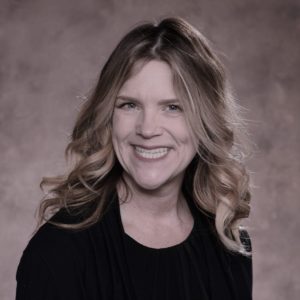
A: McKinley STEMM Academy is an urban community school that serves 275 students, of which 80 percent are minorities and 100 percent are on free/reduced-priced-lunch programming. McKinley was restructured for the 2018-19 school year with a new administration and teaching staff, all of whom have a background in rigorous, project-based learning (PBL) and are committed to the philosophy of STEM education.
The mission of McKinley STEMM Academy is to provide innovative experiences in STEMM to cultivate life-long learning and to help students become critical problem solvers in the 21st century. We believe that all students learn differently and that by offering a STEMM project-based curriculum that allows differentiation through the various learning styles, all of our students can show success in their academics as well have opportunities to engage in STEMM-related concepts that will generate interest in STEMM-related college or career paths.
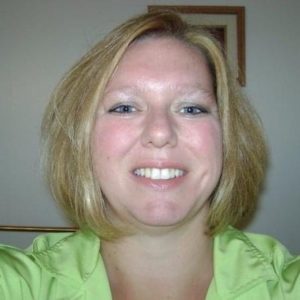
In addition to science, technology, engineering and math, McKinley STEMM Academy has an additional “m” that stands for “medicine.” ProMedica, a northwest Ohio health-care system, has been a dedicated partner with Toledo Public Schools for years and provided funding for our STEMM catalyst lab. The catalyst lab provides for innovative teaching and learning opportunities with job-embedded professional development and support from an instructional coach.
Q: Why did you seek the state’s STEM designation for your school, and how many times did you apply?
A: We thought that it was important to seek STEM designation for our school because for us it was a validation of what we do here as well as opening doors for OSLN collaboration and professional development opportunities.
Our staff and leadership at McKinley STEMM have been dedicated and committed from Day One to providing all of our students with real-world, project-based experiences that encourage exploration of STEMM concepts and help them make connections between school and community, fostering a growth mindset that will, we hope, translate into STEMM careers. The work that we do here on a daily basis aligns with Ohio’s Quality Model for STEM and STEAM schools.
Through the OSLN, we can collaborate with, and learn from, like-minded educators. Recently this month, our third-grade teachers, Amanda DeKay and Shani Mixon, shared with other Ohio STEM educators, through a virtual meetup put on by Ohio EdTechs (Ohio Educational Technology Agencies), demonstrating what PBL looks like in a remote-learning environment and to provide evidence that it can be done. Here are their presentation slides.
Through OSLN webinars and other professional development opportunities, our staff is able to learn and grow with other educators within the STEM learning network. We feel extremely fortunate to be part of a group that is as dedicated to STEM education as we are.
We applied for STEM designation twice. The first year we applied, we received an overall rating of “approaching,” showing significant progress toward designation but not yet meeting all the requirements. As a team, we thought that we were so close the first year, and after reviewing the feedback that we received, we felt strongly that if we followed the recommendations and the next-step suggestions offered, we could possibly receive designation in our second year.
Q: How did you change or improve your application over time?
A: The second year we applied, we thought that we had a deeper understanding of what being a STEM school entailed. Although our teachers and students followed Gold Standard Project Based Learning, as defined by the Buck Institute for Education/PBLWorks, we needed to create a personalized design cycle that worked for our students and staff.
Once our engineering design process was created and adopted throughout the school, we began to see and hear common language being shared, as well as seeing students gain a deeper understanding and appreciation of the entire process and not just focus on the end result.
We also began to refocus and realign our partnerships. For example, we began to develop a reciprocal relationship with Yarder Manufacturing, a sheet metal fabrication company in Toledo. Yarder executives and associates continue to support us with real-world problem-solving opportunities as they share their skill and expertise to assist us in design challenges.
Last year, Matt Yarder, company vice president, and his associates backed our FIRST LEGO League students with financial and mentoring support as our team focused on designing a better transit system for people with disabilities. In working with our students, Yarder and company shared ways in which the work that our students were doing was aligned with not only the technical skills needed to work at Yarder Manufacturing but also in other STEM-related fields. Through that support, our first-year FIRST LEGO League team advanced to the state of Ohio championship as one of the 60 best teams in Ohio.
We continue to work with Yarder this year via a virtual platform. In place of an in-person field trip, our students participated in a virtual field trip to Yarder and are using what they have learned as the platform for the #STEMpowersOhio Design & Entrepreneurship Challenge that they are participating in this school year.
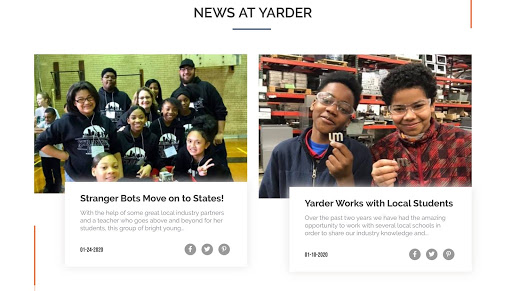
Q: As part of the application process, did you modify your school culture, or has PBL been emphasized for a while?
A: Project-based learning has been emphasized since our restructuring in 2018-19. The entire staff received training through the Buck Institute for Education/PBLWorks during the first two summers and support throughout the school year with site visits from their trainer. PBL support continues through the efforts of an instructional coach, Andrea Bennett, with job-embedded professional development for all staff.
As a whole, our staff adopted a culture of “growth mindset” as opposed to “fixed.” We know that our students can be independent problem solvers who can learn through their mistakes and trials. Creativity and perseverance are at the forefront of all of our projects.
This was not an easy task in the beginning because of the previous school culture that had been in place before our arrival. Students asked for worksheets and just wanted to be told the answer. They told us, “You’re doing too much,” or, “This is too hard,” when we presented them with projects and problems to solve. The students didn’t think that we really cared about them and their learning. It took some work to build relationships of trust and caring with our students. The culture of the building has changed to one of, “We can do this,” and, “There is another way, we got this.”
Students are now active participants in how and what they learn, with teachers facilitating learning experiences for academic growth. Giving students and teachers the autonomy to plan PBL projects, coupled with a variety of effective teaching strategies, has helped our students not only grow academically but also achieve problem-solving skills that will benefit them in their personal lives and future career choices.
Q: How did you gather your community sponsors? Who are they, and what do they contribute to your school and its students?
A: Partnerships with the University of Toledo and GLOBE (Global Learning and Observations to Benefit the Environment Program) came with several of the teachers who had already been working with UT and were GLOBE trainers. Our teachers also have working relationships with the Northwest Ohio Center for Excellence in STEM Education at Bowling Green State University – an OSLN Hub – by participating in its numerous professional development opportunities and programs that advance STEM education.
Our Yarder Manufacturing partnership began when Cynthia Madanski, our seventh- and eighth-grade science teacher, reached out to Matt Yarder after a district career tech initiative. She could see the potential for a reciprocal relationship and scheduled a field trip for her students where they toured the Yarder facility, asked questions and began a working partnership.
Through these relationships and partnerships, we can offer our students real-world problem-solving experiences that enable them to work collaboratively using critical-thinking skills.
Q: How did the pandemic affect your application process for the STEM designation? What was the most challenging part of the process overall?
A: We really thought that we had come so far in our application process, and we all were really excited to have the opportunity to share our story. Our site visit was to coincide with our annual STEAM Expo, to be held in March during the past school year. This is an event open to our families and community to see first-hand all of the projects that the students had been working on throughout the year.
So when the governor made the hard decision to close schools the Friday before our event, we all had a “now what?” moment. We were really grateful that OSLN director Heather Sherman and Kimberly Bell, STEM education program specialist for the Ohio Department of Education, gave us the opportunity to present our journey through a virtual site visit. We gathered a small team to share our design process and how we utilize it in all of our classrooms, as well as share our community partnership relationships.
The part that we found to be the most challenging was determining how we would share the vast amount of work samples in a short window of time within the confines of a virtual platform. Our team came together multiple times throughout the planning process to share ideas, photos, lessons and student work samples. As the principal, I could return to the school during the pandemic shutdown. I walked the empty halls and took pictures of student project displays and work boards.
That experience was quite surreal. The silence of the halls on a day that should have been bustling with activity was a moment that I will never forget. I remember the sense of pride that day as I spent hours engaging with student work samples and photographing everything. Those photos, along with teacher documentation, became the foundation for our presentation.
Q: Another pandemic question: How have you been able to continue PBL during this difficult time of distance learning?
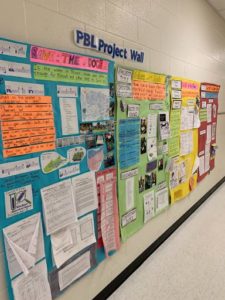 A: As a STEMM school that focuses on project-based learning, one of the biggest challenges that we faced by starting remotely was trying to figure out how we could continue to focus on PBL and STEMM in a virtual environment. As before, it was all about connecting with our students and engaging them.
A: As a STEMM school that focuses on project-based learning, one of the biggest challenges that we faced by starting remotely was trying to figure out how we could continue to focus on PBL and STEMM in a virtual environment. As before, it was all about connecting with our students and engaging them.
Driving questions – those posed to students to get them to investigate a problem or process – are still an important component of lesson delivery and content. Many of our teachers aimed their focus on what was important to our students during this time. Many of our students are battling feelings of anxiety and isolation, and our specialists really focused in on that and created artistic opportunities for our students to express themselves.
Erin Clinton, our art teacher, reached out to famous artist and muralist Kevin Bongang for some art inspiration. Our students studied his artwork and met him through a Google Meet session, asking him questions and sharing their thoughts and ideas as they began making their own inspirational works of art, sharing messages of positivity. All of their artwork was created digitally and shared with the artist.
Once the students are able to return to school for in-person learning, they will begin the hands-on work of painting and seeing their designs come to life. They are looking forward to seeing their messages of positivity radiate throughout our halls.
This fall, Cynthia Madanski’s annual Maumee River water quality testing was done virtually. Normally she would take her seventh-graders on a field trip to the water to conduct the work in person, however, due to the pandemic, she needed to come up with a creative solution for her students to still participate. Prior to testing day, the students learned about the nine chemical tests to be conducted, how to identify macroinvertebrates and conduct a habitat analysis to rate the quality of a water source.
Then students visited the river remotely as Mrs. Madanski and her team of educators were there in person, livestreaming the event. Mrs. Madanski performed the water-testing protocols under the direction of students. Team educators oversaw the Google Meet so that students could participate, asking and answering questions as they gathered their data.
After the day in the field, students analyzed and interpreted the data and shared their findings at the Toledo Metropolitan Area Council of Governments Student Watershed Watch Virtual Conference and with GLOBE Mission EARTH in the student research report Virtual Symposium.
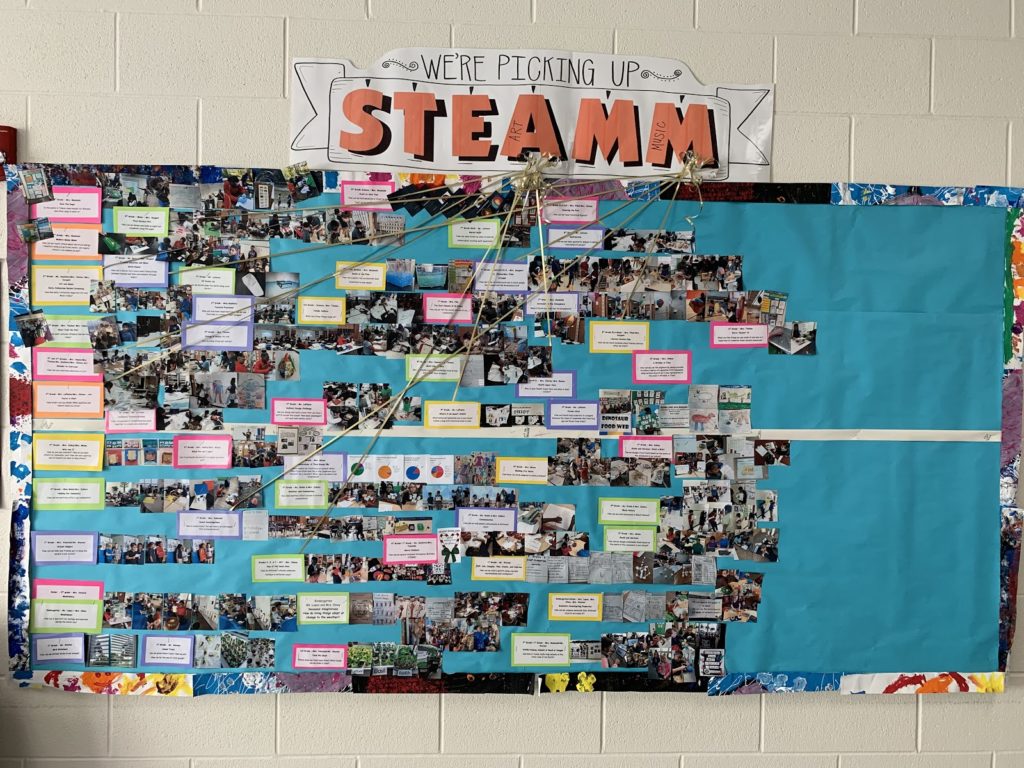
Q: Based on your experience, what advice would you give other school administrators who might be considering applying for the state’s STEM designation?
A: Shared leadership is truly one of our guiding principles. At McKinley STEMM, we all have a common focus and vision regarding PBL and STEMM education, however, every educator approaches this methodology with a unique perspective. Project-based learning and STEMM education is not a one-size-fits-all curriculum, and when you wrap the standards around student voice and choice topics, what you see behind every educator’s door looks a little different.
This philosophy provides autonomy for teachers and administrators and allows our educators and students to take risks, make mistakes, learn from those mistakes and grow in the best possible environment.
Shifting to independent thinking is key for the students. Focus on strategies that lead the students to independent problem solving while allowing the teacher to be more of a facilitator. This idea should be infused throughout the school.
Start with small projects to build confidence in both the students and staff before tackling something more complex. But don’t let the hurdles keep you from the track. Dream big, and use the Gold Standard PBL as a guide/framework.
Establish a collective, collaborative vision of all stakeholders, and create a plan to achieve that vision. Revisit the plan often, and reflect on your progress.
And finally, share your wins! Invite others to see student work, and have a celebration to showcase the learning that engages students. When people come to visit our school and walk the halls with us, we will often say, “Behind every door is a great story.” These are the stories that define who we are, the stories that challenge and motivate our students and keep them engaged.
By offering innovative experiences in STEM education, the hope is that together we are cultivating life-long learners and we are helping our students become critical problem solvers in the 21st century.
For examples of student work, and to follow our journey, please “like” and follow us at
https://www.facebook.com/McKinleySTEMM